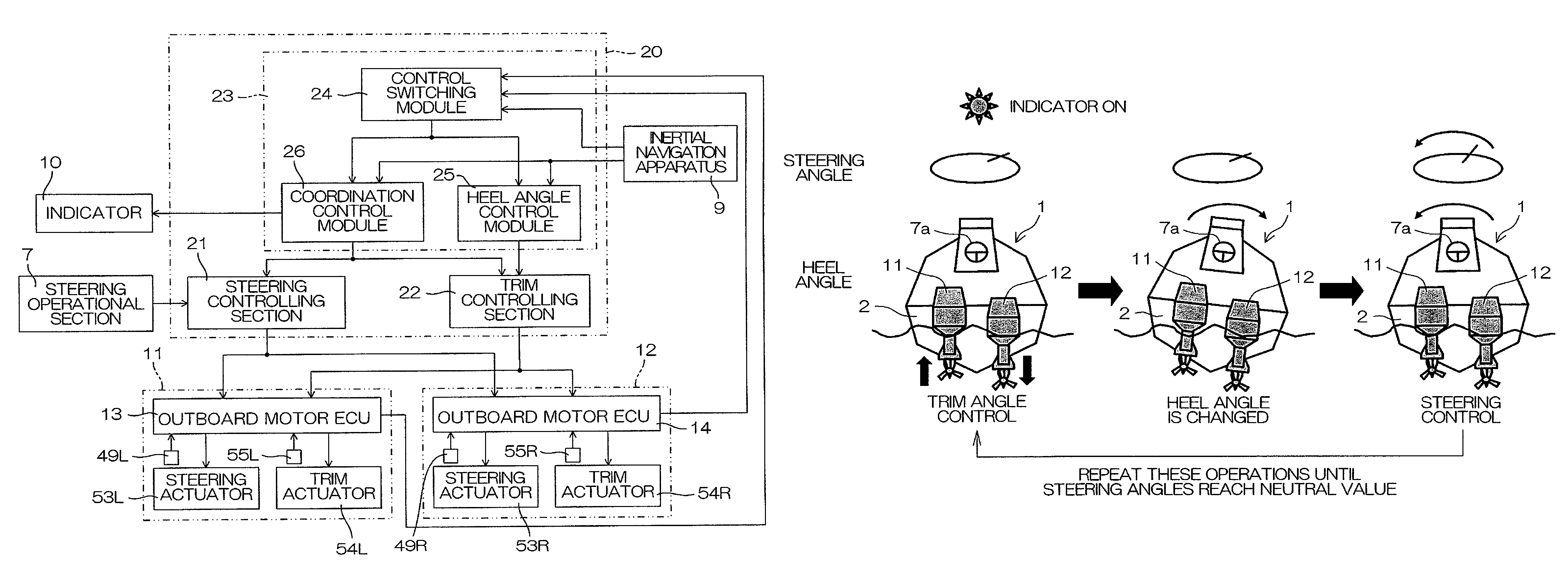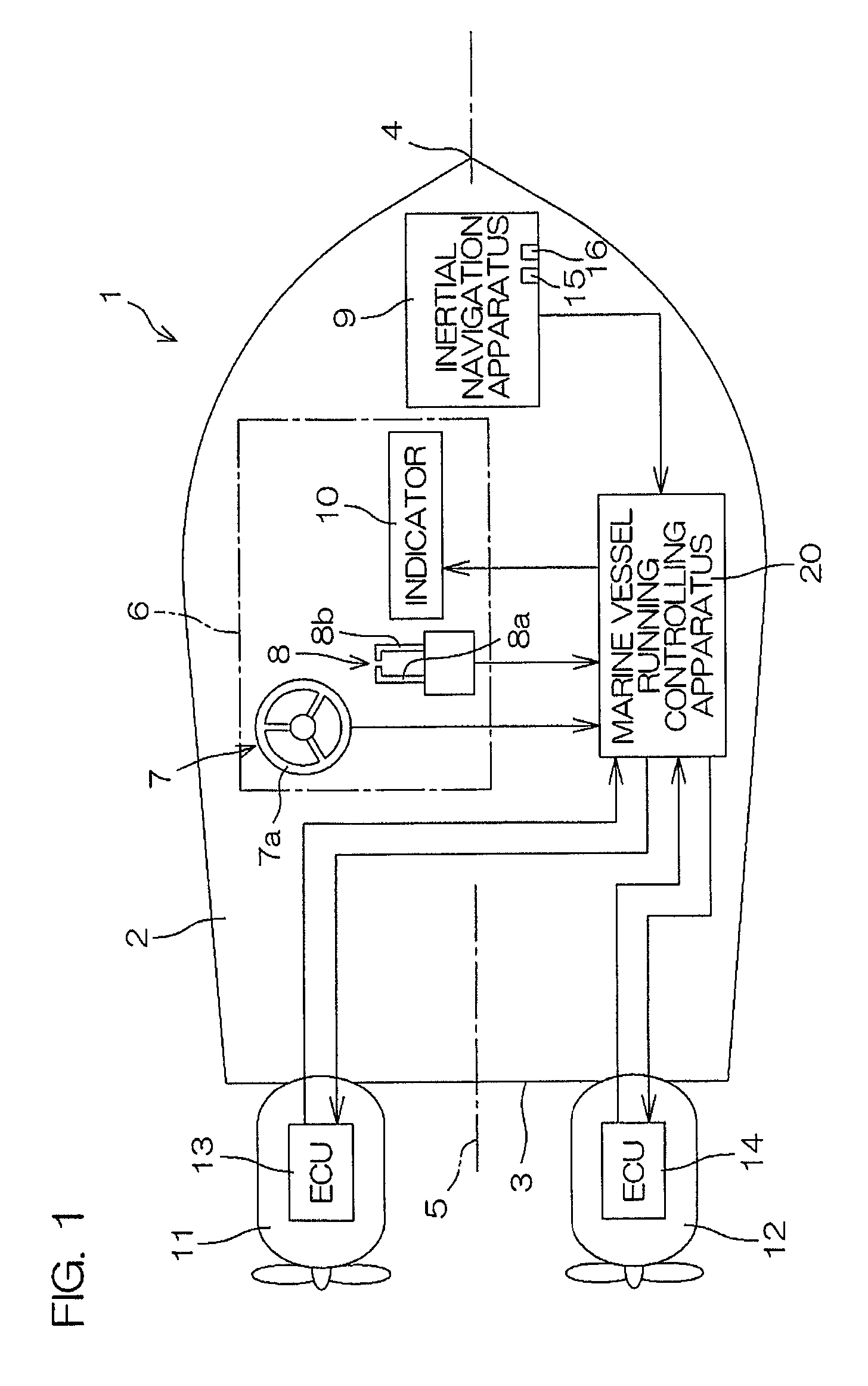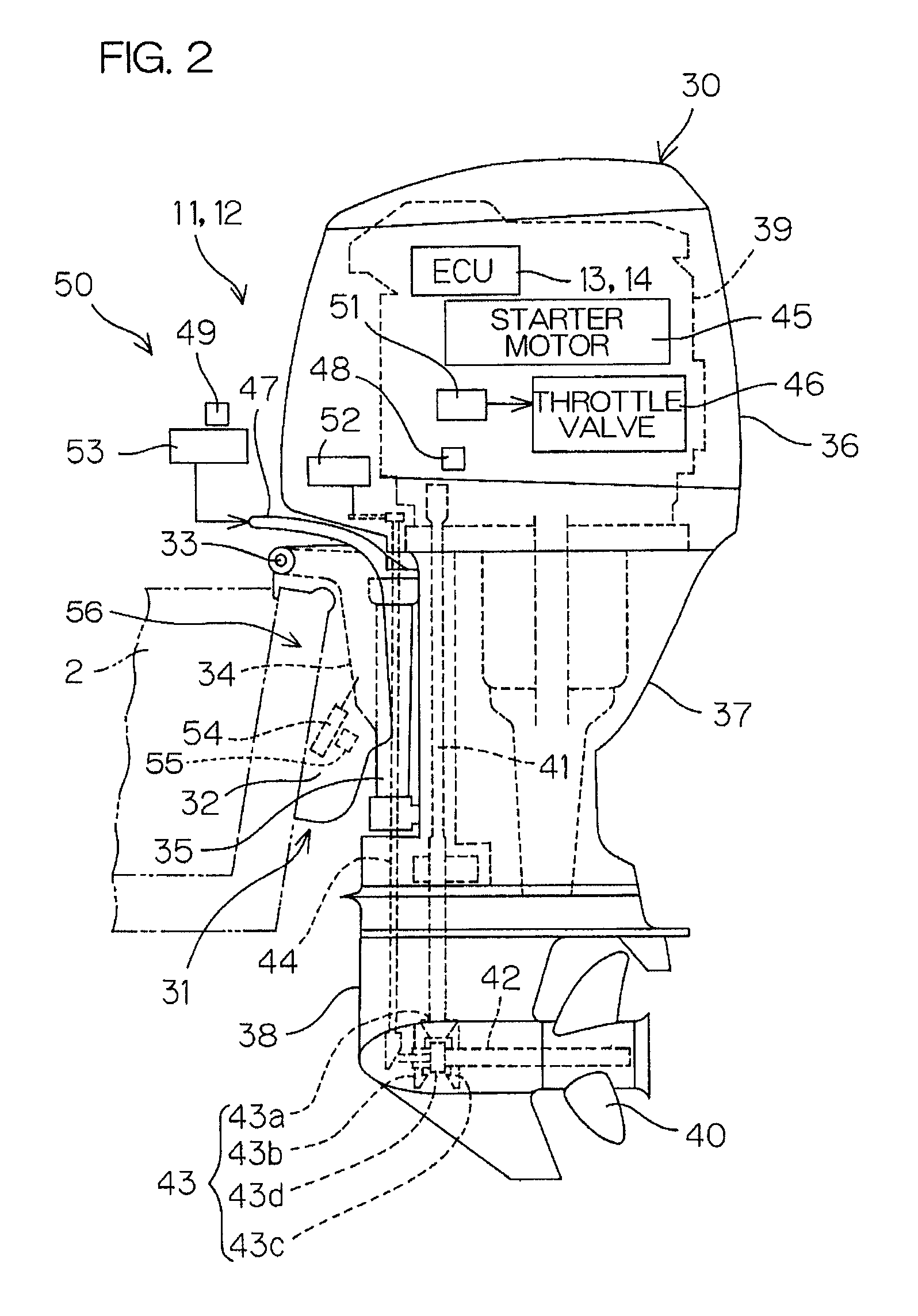Marine vessel running controlling apparatus, and marine vessel employing the same
a controlling apparatus and marine technology, applied in the direction of process and machine control, electric devices, underwater equipment, etc., can solve the problems of reducing the automatic attitude control apparatus is no longer operative, and the stability of the marine vessel is steadily non-zero roll angle, etc., to reduce the resistance received by the marine vessel during the travel and reduce the propulsive efficiency of the propulsion system
- Summary
- Abstract
- Description
- Claims
- Application Information
AI Technical Summary
Benefits of technology
Problems solved by technology
Method used
Image
Examples
Embodiment Construction
[0041]FIG. 1 is a schematic diagram for explaining the construction of a marine vessel 1 according to a first preferred embodiment of the present invention. The marine vessel 1 is preferably a relatively small-scale marine vessel, such as a cruiser or a boat, and includes a pair of outboard motors 11, 12 attached to a stern (transom) 3 of a hull 2, for example. The outboard motors 11, 12 are positioned laterally symmetrically with respect to a center line 5 of the hull 2 extending through the stern 3 and a bow 4 of the hull 2. That is, the outboard motor 11 is attached to a rear port-side portion of the hull 2, while the outboard motor 12 is attached to a rear starboard-side portion of the hull 2. The outboard motor 11 and the outboard motor 12 may hereinafter be referred to as “port-side outboard motor 11” and “starboard-side outboard motor 12”, respectively, for differentiation therebetween. Electronic control units 13 and 14 (hereinafter referred to as “outboard motor ECU 13” and...
PUM
 Login to View More
Login to View More Abstract
Description
Claims
Application Information
 Login to View More
Login to View More - R&D
- Intellectual Property
- Life Sciences
- Materials
- Tech Scout
- Unparalleled Data Quality
- Higher Quality Content
- 60% Fewer Hallucinations
Browse by: Latest US Patents, China's latest patents, Technical Efficacy Thesaurus, Application Domain, Technology Topic, Popular Technical Reports.
© 2025 PatSnap. All rights reserved.Legal|Privacy policy|Modern Slavery Act Transparency Statement|Sitemap|About US| Contact US: help@patsnap.com



